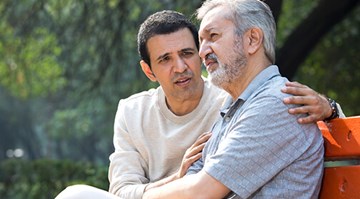May is National Stroke Awareness Month, and roughly 7.8 million adults in the U.S. have had a stroke, accounting for 3.1% of the adult population. So what can you do if someone you know displays signs of having a stroke?
A stroke can strike without warning — and every second counts. Each year, about 165,000 people in the U.S. die from strokes, making them the fifth leading cause of death. Despite these alarming numbers, strokes are often survivable when identified and treated quickly. That’s why recognizing the warning signs and knowing what to do can save lives and reduce long-term disability.
A stroke occurs when blood flow to part of the brain is interrupted — either by a blocked artery (ischemic stroke) or a burst blood vessel (hemorrhagic stroke). Without oxygen-rich blood, brain cells begin to die within minutes.
The severity and outcome of a stroke often depend on how fast a person receives treatment. That’s where the F.A.S.T. method comes in.
Act F.A.S.T. to Spot Strokes
The CDC emphasizes the importance of the F.A.S.T. method to identify stroke symptoms quickly:
- F — Face: Ask the person to smile. Does one side of their face droop?
- A — Arms: Ask the person to raise both arms. Does one arm drift downward
- S — Speech: Ask the person to repeat a simple phrase. Is their speech slurred or strange?
- T — Time: If you observe any of these signs, call 9-1-1 immediately.
Other sudden symptoms may include:
- Numbness or weakness in the face, arms, or legs, especially on one side of the body.
- Confusion, trouble speaking, or difficulty understanding speech.
- Trouble seeing in one or both eyes.
- Trouble walking, dizziness, loss of balance, or lack of coordination.
- Severe headache with no known cause
Stroke Statistics
Understanding the prevalence and impact of stroke can underscore the importance of awareness:
- In 2022, there were 165,393 stroke-related deaths in the United State, with a rate of 49.6 deaths per 100,000 population.
- Stroke death rates have declined since 2001 but have seen recent increases in all U.S. regions through 2021.
- 38% of people hospitalized for stroke in 2014 were under the age of 65, highlighting that strokes can occur at any age.
Importance of Immediate Action
Time is critical when dealing with a stroke. Effective treatments are most beneficial when administered within three hours of symptom onset. Delays can result in increased brain damage and reduced chances of recovery. If you suspect someone is having a stroke:
- Use the F.A.S.T. method to assess symptoms.
- Note the time when symptoms first appeared.
- Call 9-1-1 immediately.
Do not attempt to drive the person to the hospital; emergency medical services can begin life-saving treatment en route.
At QualChoice, we are committed to promoting health awareness and providing resources to help you and your loved ones stay informed. Understanding the signs of stroke and acting quickly can make a significant difference in outcomes.For more information on stroke prevention and treatment, visit the CDC's stroke information page.






